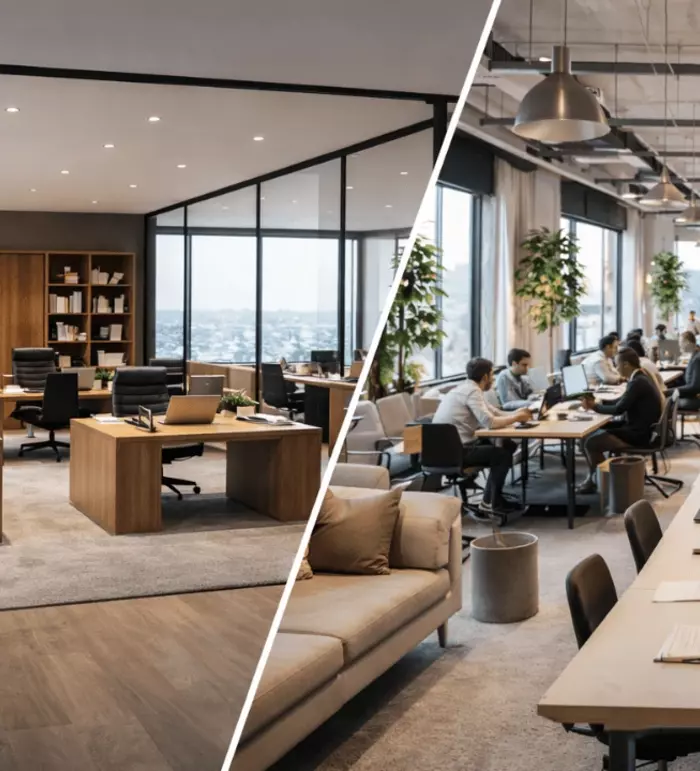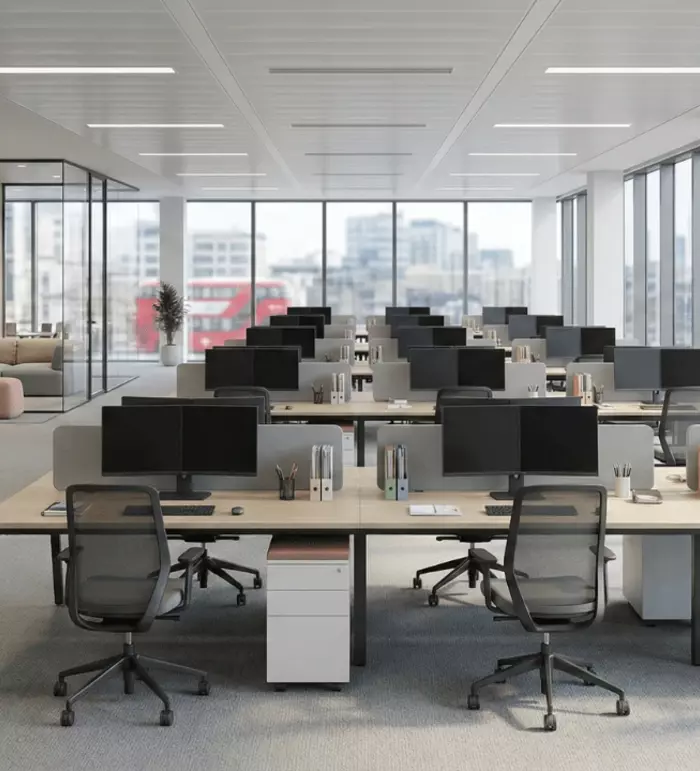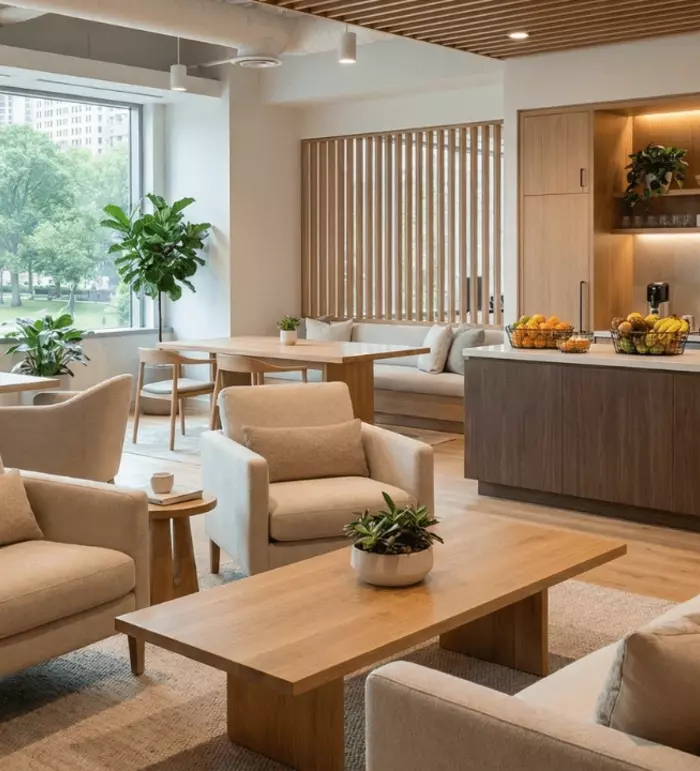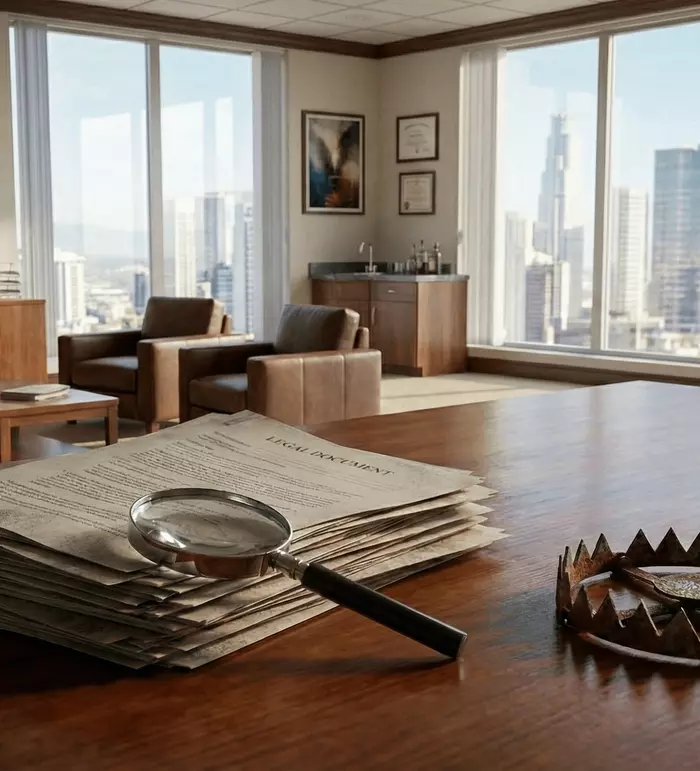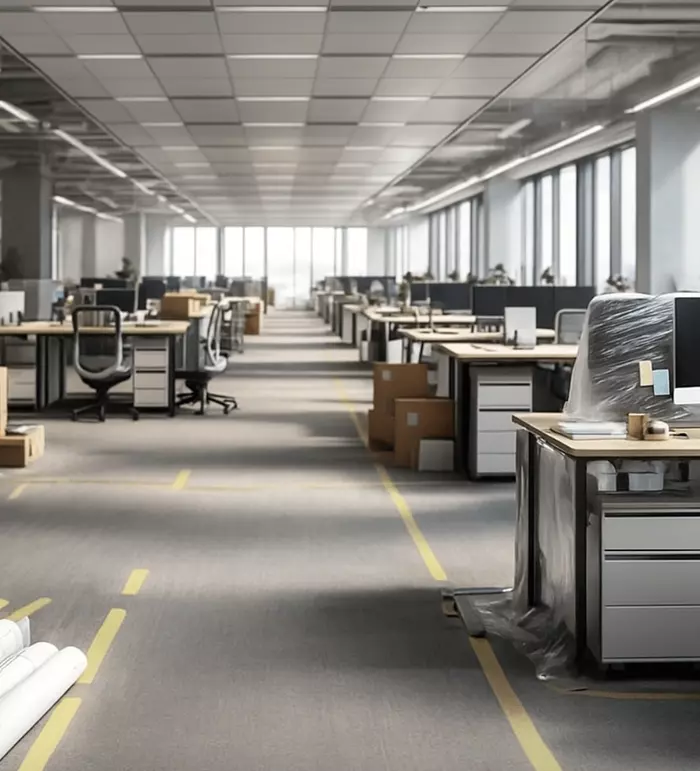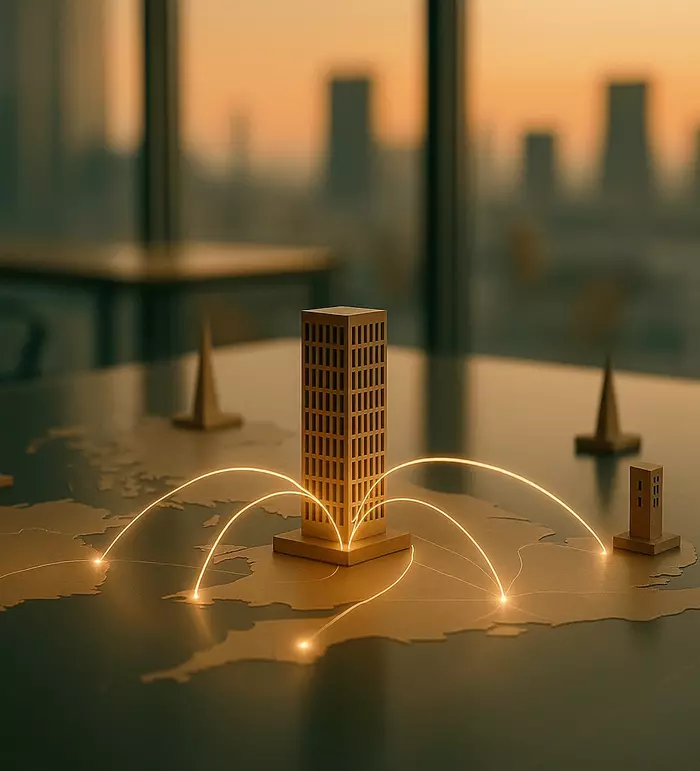It’s a little hard to imagine what the future of the office holds. The general consensus seems to be split.
We will either: A) have no offices at all and work from home; or B) go to work in a futuristic office, a SMART building. AKA a virtual, technological realm like in Minority Report/ Ex Machina. It may seem a little daunting, but the latter is on the up.
Let’s break down in a little more detail what those technological fortresses (or SMART buildings) actually are, what they can do for you and when we expect to see more of them.
What makes a building SMART?

SMART buildings have automated operating systems that monitor all elements of the structure, making it run smoothly. These centralised systems monitor everything from parking and air quality, to security and lifts.
The software is its own living system, adapting and updating according to the business’ needs. This technology can be incorporated in various ways. One example would be lighting and windows that adjust as the day goes on, according to how bright it is outside.
SMART buildings are gaining prominence for a number of reasons:
- Their use of sustainable design:
Unlike traditional buildings, in SMART buildings each floor can have a tailored environment to suit the user, making them more energy efficient.
Often designed with sustainable materials such as wood, glass and greenery, SMART buildings are actively reducing carbon emissions.
A perfect example of innovative sustainable design is Citicape House, a mixed-use hospitality based building in London with co-working space due for completion in 2024. It will feature the largest green wall in Europe at 40,000ft² and will absorb eight tonnes of pollution annually.
- They use centralised automated systems and Artificial Intelligence (AI) to improve facilities management:
SMART buildings are like a living organism. Every operational decision made about that building is centralised into one technological automating system.
The automated system is able to identify patterns in occupant’s useage and translate that insight to inform how the building operates resulting in efficiency opportunities across multiple areas such as temperature, light and security.
This plays an important and exciting role in addressing one of the main concerns employees have about work - security.

According to a survey completed by the world data firm The Nielson Company and TCC Assets in 2018, 62% of respondents ranked security as their highest priority at work.SMART building can revolutionise security management by integrating security, fire and life safety systems into a single comprehensive interface.
This means facility managers can have oversight of CCTV, access control, intruder alarms and fire detection sensors all in one place - and only a click away from an app or desktop making management accessible from anywhere. Joe Oliveri, General Manager at Johnson Controls Security explains,
“With integrated, comprehensive security, fire and life safety system oversight in place, facility managers are better equipped to minimise disruption and focus on creating what matters most: a safe, secure environment, maximum efficiency and uptime, and a healthy bottom line.”

Not a million miles from Ex Machina after all! But where does all that leave you?
-What can SMART buildings do for you?
SMART buildings are only useful so long as they are user-friendly. That’s why it’s so important to ask yourself: how can SMART buildings help workers?
- AI will boost worker productivity and efficiency:

The Centre for Economics and Business Research (CBRE), in affiliation with Concentra Analytics found that 86% of Britain’s largest businesses are worried about their declining productivity. Sustainable design makes for more comfortable, focused working environments.
The mindful design of SMART buildings along with AI automating cognitive tasks appeases this concern.
According to a recent paper published by Oxford University, The Future of Employment, AI can also support efficiencies in worker productivity by condensing timely and mundane daily tasks.
Take SMART lifts, for example. They anticipate which floors employees’ are headed for and direct them there via the most efficient route. These SMART innovations will reduce congestion and save energy.
Another example is SMART parking. This uses software that directs you to a specific parking spot that correlates with your schedule along with the floor / area you’re working.
- They offer workers a greater sense of control:
Robert Hemmerdinger, Head Sales and Marketing Officer at Delta Controls explains that tenants expectations are shifting:
“Tenants want more control over their environments. Granular room control will become the norm across the industry.”
We now have environmental monitoring technology that can measure the noise, air and natural light levels in specific areas in real time. All of this can be accessed one one place via an app, giving occupants a greater sense of control over their comfort and wellness in their working environment.
Hemmerdinger goes on to point out the difficulty will be finding the balance of controlling technology to meet the needs of all occupants within that workspace.
- They will place human interactions at their very core:
A great example of this is conversational interface solutions or chatbots. Chatbots use the template of human interaction - a conversation - and combine this with their programmed intelligence.
Ronald Ashri, a Technical Strategist at Deeson explains exactly how such initiatives will improve efficiency:
“Conversational interfaces offer a natural way of introducing changes without having to go through lengthy processes and costly IT projects before anyone perceives benefits.”
Real time language translation during meetings, more seamless experiences with 5G, and user apps are just a few examples of how SMART building development is always reared towards improving human interaction at work.
With SMART buildings spearheading so much new technology the possibilities of the future of the workplace are endless. However, the uptake is slow and examples are still few and far between.
The question remains: how long before the tipping point when we see SMART elements implemented in offices everywhere?
When will SMART buildings become our everyday offices?
What are we waiting for? The brief answer to this is: there is no general consensus as to when SMART buildings will become the norm.
The wheels are already in motion, but there are a few kinks to iron out before SMART buildings can take off:
There must be increased awareness of the benefits of SMART buildings to make their large investments justifiable:
According to Buildings, the average cost to transform an old building into a SMART one is $2.30 per square foot. That’s $250,000 per 100,000 square foot (the size of an average ten storey office building.) This is an expensive investment for many businesses..

That said, according to the American Council for Energy-Efficient Economy (ACEEE), SMART building integration can save the economy a staggering estimated $60 billion between 2014-2030.
Technology needs to be a help, not a hindrance:
As The Future Workplace Report details, SMART buildings will only prove to be efficient if users know what they are doing. As Chris Moriarty, Director of Insight and Engagement Institute of Workplace Facilities says,
“In short, technology itself doesn’t matter, the experience does; and the best role of the former is to improve the latter. That is where the value of technology lies.”
Businesses must adapt to automated systems successfully:
As each business is different, there isn’t a blow-by-blow instruction manual that arrives with a SMART building. Ian Dempster, Senior Director of Product Innovation at Optimum Energy explains,
“Sometimes new technology is not well-received and adopted by the workforce or does not have the expected impact. I have seen systems implemented with the latest technology and then get ignored or disconnected because the people using it were not consulted or trained in the new technology.”
Each business will have to introduce automated technologies to the best of their advantage. The role-out and the adaptation to them needs liftoff for these buildings to really thrive.
That said, the wheels are in motion. The Edge in Amsterdam is the most energy efficient building in the world (it’s actually energy positive!). Bloomberg HQ in London achieved 98.5% rating based on the global sustainability standard. View in California implemented the industry’s first software-based glass-break detection system.
The question shouldn’t be ‘when is it going to happen?’ It already is happening.
The question should be what needs to happen next to introduce SMART buildings as a part of our everyday life?
The bottom line
There’s many crucial factors to consider when it comes to putting the SMART in buildings. The important things to take away are:
- SMART buildings use of automated and centralised systems need to be effectively rolled out to increase building management efficiency and safety. Installing sensors in all rooms will then make it a one track process to assess fire hazards, room occupation, and light and air qualities.
- They will drive productivity in the workplace because they will boost efficiency. If tasks such as room bookings and safety can be monitored there will be more time to creative, human problem solving.
- They are a large upfront investment but ultimately could save the economy billions thanks to their extensive focus and use of sustainable materials. Their biophilic initiatives will make the workplace a cleaner, more sustainable and energy efficient place to work.
Buildings change because the way people work changes. Employees’ wellness, productivity and work-life balance is increasingly becoming the biggest concern for the future of business.
SMART buildings can support this change and are slowly becoming more present in the workplace. However if humans are not at the heart of what SMART buildings are trying to achieve, it cannot succeed on a grand scale.
As George Westerman, research scientist at MIT Centre for Digital Business so aptly puts, without proper human integration, SMART buildings will merely exist as “really fast caterpillars,” when they could be butterflies.
In the next issue we’ll explore just how biophilia - the ‘green workspace’ - is being used not only to boost wellness, but as a strategic business lever.
